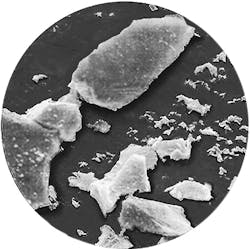Silica dust has been a workplace hazard for decades. As long as 80 years ago, Frances Perkins, Secretary of Labor from 1933 to 1945, was calling for employers to protect workers from silica’s harmful effects. While there have been rules in place for some time, the Department of Labor is now tightening the screws in an effort to further protect workers.
One of the most common naturally occurring elements on Earth, silica is found in two forms, crystalline and noncrystalline. Sand and quartz are common examples of crystalline silica. The blasting, cutting, chipping, and drilling that creates silica dust is dangerous to breathe. If inhaled, it can cause lung cancer, silicosis, chronic obstructive pulmonary disease, and kidney disease.
Many people, including Dr. David Michaels, Assistant Secretary of Labor for Occupational Safety and Health, believed that the current exposure limits were outdated and didn’t adequately protect the 2.3 million men and women who face exposure to silica dust daily in the workplace. Construction workers account for 2 million of these men and women. Industries such as brick manufacturing, foundries, and hydraulic fracturing employ another 300,000 workers.
The updated rule reduces the permissible exposure limit for crystalline silica to 50 micrograms per cubic meter of air averaged over an eight-hour shift. It requires employers to use engineering controls (such as water or vacuum systems) to limit worker exposure; provide respiratory protection when controls are not able to limit exposure to acceptable levels; and provide medical exams to highly exposed workers. The new rule makes it easier for construction employers to be in compliance by including a table of specified controls they can follow without having to monitor exposures.
When the update becomes fully effective, OSHA estimates it will save more than 600 lives per year and prevent over 900 new cases of silicosis annually. Thomas E. Perez, the Secretary of Labor, echoed OSHA’s sentiments. “This rule will save lives,” Perez said in a press release. “It will enable workers to earn a living without sacrificing their health.”
The rule is also estimated to provide net benefits of $7.7 billion per year. However, the National Industrial Sand Association said the updated rule would cost companies more than $5 billion.
The rule is written as two standards, one that will cover construction employers and one for general industry and maritime. Employers covered by the construction standard have until June 23, 2017, to comply with most requirements, and employers covered by general industry and maritime have until June 23, 2018.
